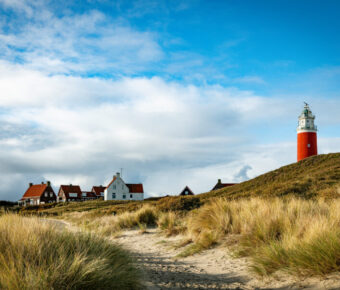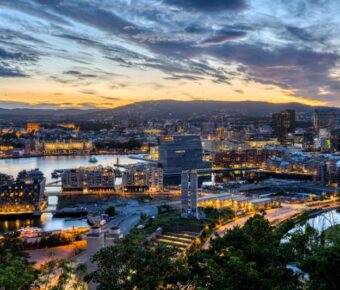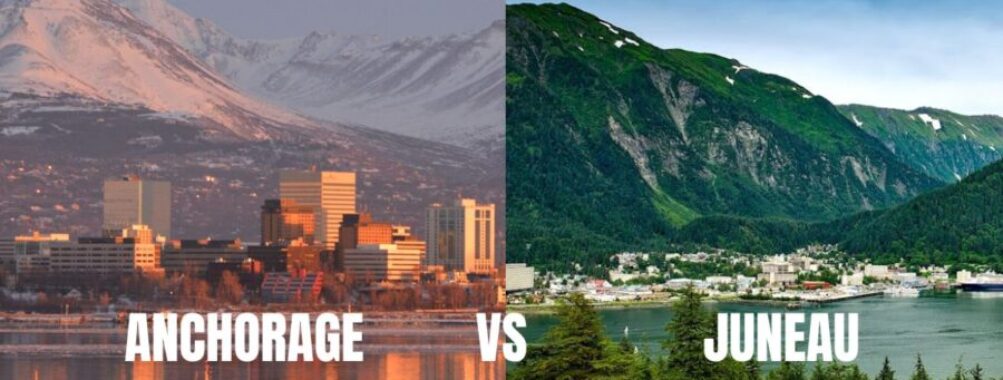
Anchorage vs Juneau: 7 Key Differences for Your Alaska Adventure
Picking between Anchorage and Juneau? It’s honestly not just about choosing a city—it’s about deciding what kind of Alaska you want to dive into. If you’re after a bigger city vibe with tons of dining, culture, and the freedom to hit the road, Anchorage is your spot. But if glaciers, whale watching, and a slower, tucked-away pace sound better, Juneau’s got the edge. Both get you out into wild nature, just in totally different ways.
I’ve wandered both, and wow—the energy couldn’t be more different. Anchorage feels like a lively launchpad: grab a coffee, hop in the car, and you’re hiking in the mountains before you know it. Juneau? It’s got this hidden-away magic. Surrounded by water, fjords, and icefields, there’s literally no road out. That isolation just gives it a vibe you won’t find anywhere else.
Table of Contents
- Key Takeaways
- Anchorage vs Juneau: At a Glance
- Location and Accessibility
- Population and City Vibe
- Unique Features
- Climate and Weather Patterns
- Rain and Snowfall Differences
- Seasonal Temperatures
- Daylight Hours and Midnight Sun
- Natural Landscapes and Scenery
- Mountains and Wilderness
- Glaciers and Icefields
- Outdoor Activities and Adventure
- Hiking and Trails
- Wildlife Encounters
- Fishing and Hunting
- Water-Based Experiences
- Boat Tours and Cruises
- Kayaking and Water Sports
- Culture, History, and Local Attractions
- Museums and Heritage Centers
- Alaska Native Culture
- Arts and Events
- Food Scene and Local Flavors
- Fresh Seafood Specialties
- Dining Options and Local Favorites
- Frequently Asked Questions
- What are the key differences in living experiences between Anchorage and Juneau?
- How does the cost of living in Juneau compare to that of Anchorage?
- What are the climate variations between Anchorage and Juneau throughout the year?
- Which city, Anchorage or Juneau, offers more employment opportunities?
- Can you highlight the cultural and recreational differences between Juneau and Anchorage?
- What are the transportation options available for traveling between Juneau and Anchorage?
- Book Your Dream Experience
- More Travel Guides
Key Takeaways
- Anchorage brings together city life, mountain views, and classic Alaskan road trips
- Juneau dazzles with glaciers, whales, and a sense of remoteness
- Both offer epic outdoor adventure—just in totally different flavors
Anchorage vs Juneau: At a Glance
Anchorage buzzes with roads stretching everywhere, while Juneau just kind of nestles between mountains and water, feeling almost secretive. Anchorage connects you to the rest of Alaska by car. Juneau? You’re catching a plane or a ferry. The rhythm of life in each city feels worlds apart.
Location and Accessibility
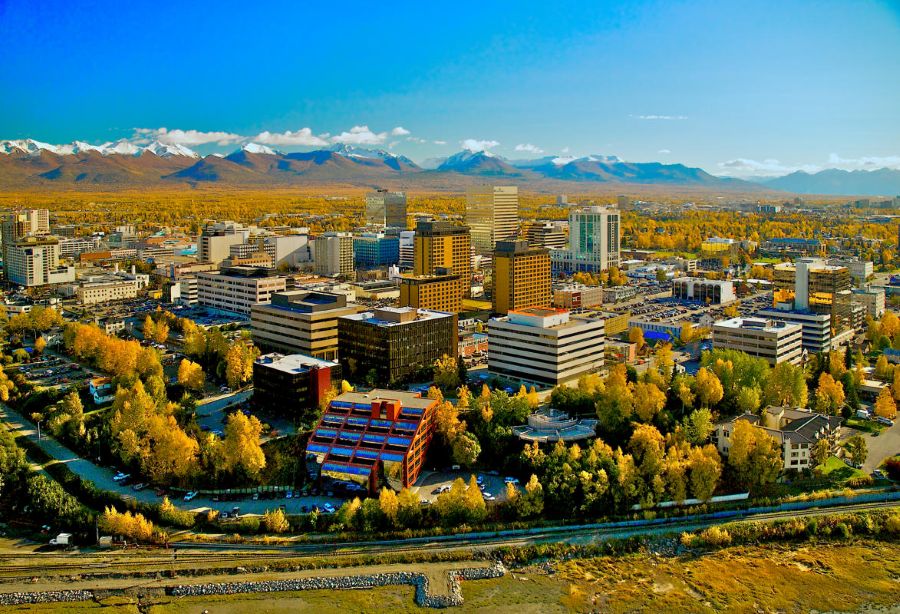
Anchorage sits in south-central Alaska, and, fun fact, you can actually drive there from the Lower 48. If you love the freedom of a road trip, that’s a huge plus. Highways shoot off to places like Seward, Homer, and Denali—so you can cover a ton of ground without ever hopping on a plane.
Juneau, though, is famously cut off. No roads in or out. You’ve got to fly or take the ferry. Honestly, that makes it feel like a real adventure just getting there. Booking flights is a breeze with sites like cheap flights, and ferries link it to other Southeast Alaska towns.
If you want to just go where you want, when you want, Anchorage is hands-down easier. But if you’re craving that surrounded-by-glaciers arrival, Juneau’s remoteness is part of the draw.
Population and City Vibe

Anchorage is Alaska’s biggest city by a long shot—almost ten times bigger than Juneau. You get more restaurants, coffee shops, and cultural events. It’s got that small-city-meets-big-energy thing going on, especially compared to other towns up here.
Juneau moves at a slower pace. Fewer people, no road connections, and a tight-knit, kind of everyone-knows-everyone community. Walk downtown and you’ll feel it—locals stop to chat, and you don’t get that “just passing through” energy like in Anchorage.
If you love choices and a bit of bustle, Anchorage is your place. If you want quiet, closeness, and nature at your doorstep, Juneau might steal your heart. I always think of Anchorage as the spot to gear up and go, while Juneau is where you actually slow down.
Unique Features
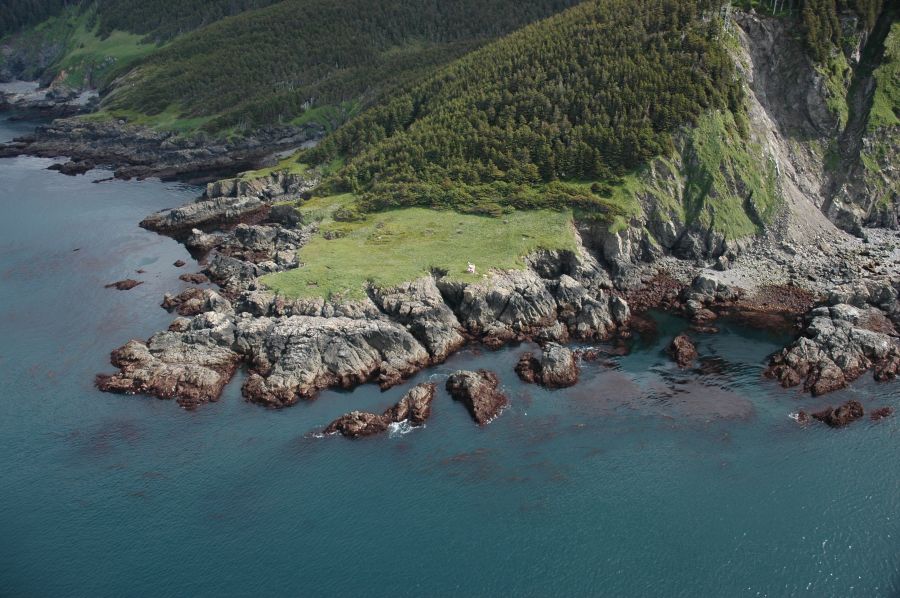
Anchorage lines up mountains on one side, ocean on the other. You can hike the Chugach Range in the morning and still make it back for a burger downtown. Moose wander through neighborhoods and beluga whales sometimes show up in Cook Inlet—pretty wild, honestly.
Juneau’s real claim to fame is its jaw-dropping setting. The Mendenhall Glacier is basically in town, and the whale-watching here? Unreal. Boating is just part of life, and if you’ve ever wanted to kayak near icebergs or spot humpbacks doing their thing, this is your spot.
Anchorage feels like a launchpad to the rest of Alaska. Juneau feels like the destination. And when it comes to places to stay, both cities have you covered, whether you want something basic or a bit more comfy.
Climate and Weather Patterns
Anchorage and Juneau might both be in Alaska, but the weather in each city? Totally different. One’s wetter and milder, the other’s colder and drier, and both have their own quirks when it comes to daylight.
Rain and Snowfall Differences
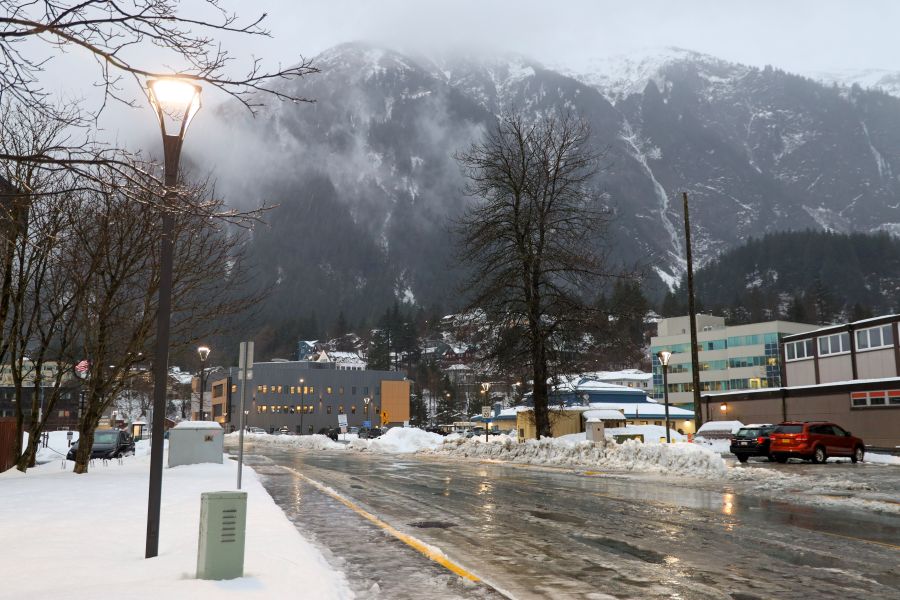
If rain isn’t your thing, Juneau might drive you a little nuts. It just rains—a lot. That coastal Inside Passage location means steady drizzle for much of the year. Locals always keep a rain jacket handy (and honestly, you should too). Expect damp air, low clouds, and muddy trails.
Anchorage doesn’t get nearly as much rain, but it makes up for it in snow. Winters bring plenty of powder, which is perfect if you’re into skiing or snowshoeing. The snow sticks around longer, too, since it’s just colder overall.
So here’s the quick tip: Juneau = rain gear. Anchorage = snow boots. You’ll still see snow in Juneau, but it’s wetter and doesn’t pile up the way it does in Anchorage.
Want to geek out on the numbers? BestPlaces has a good side-by-side with all the rainfall and snowfall stats.
Seasonal Temperatures
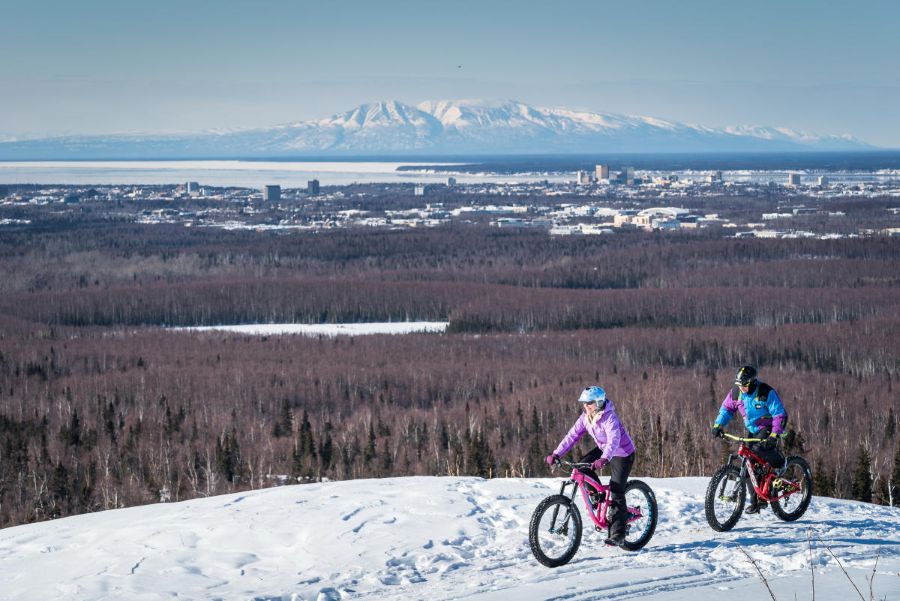
Anchorage gets colder in winter. The city’s far enough inland that it misses out on the ocean’s “warming” effect. I remember visiting in January—air sharp, snow underfoot, and that dry cold that just bites a little.
Juneau’s winters are milder but so much damper. Temps hover around freezing most days, so you get a lot of rain and slush. Even when the thermometer doesn’t look too bad, the dampness makes it feel chillier than you’d think.
Summer is a different story. Anchorage warms up nicely—60s or 70s on a good day. Juneau stays cooler, usually in the 50s or low 60s, especially when the clouds roll in. If you’re chasing sunshine and warmth, Anchorage is your better bet.
For the weather nerds, Weather Spark’s charts break down the temps month by month.
Daylight Hours and Midnight Sun
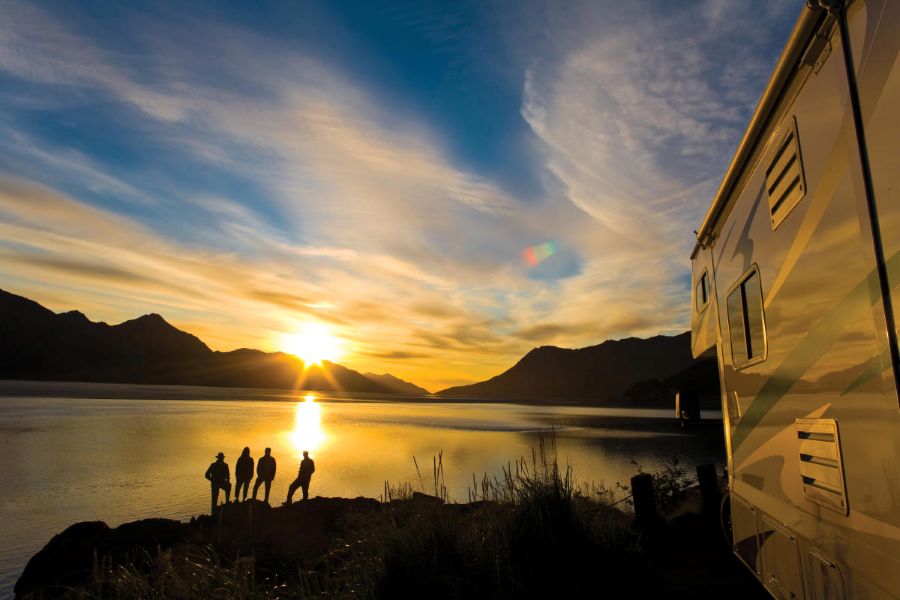
The real surprise for a lot of folks isn’t the cold or the rain—it’s the daylight. Anchorage sits farther north, so you get a taste of the midnight sun. In June, the sun just dips low but never really sets, and the sky glows all night. It’s magical, but if you’re not used to it, blackout curtains are a lifesaver.
Juneau still enjoys long summer days, but not quite as extreme. Nights can actually get dark, even in June or July, which is kind of nice if you like to actually sleep. In winter, both cities have short days, with Juneau hanging onto a little more daylight.
My first December in Anchorage? The sun barely scraped above the horizon before it was gone again. People cope by getting outside anyway or just leaning into cozy routines. You’ll want to plan your outings around the daylight, especially in deep winter.
Want the details? The Alaska Climate Research Center tracks all the daylight swings across the state.
Natural Landscapes and Scenery
Both Anchorage and Juneau sit in jaw-dropping landscapes—think mountains, glaciers, endless wilderness. The way you get out there, though, is totally different. Anchorage is all about road trips, while Juneau is for those who want to explore by water or trail.
Mountains and Wilderness
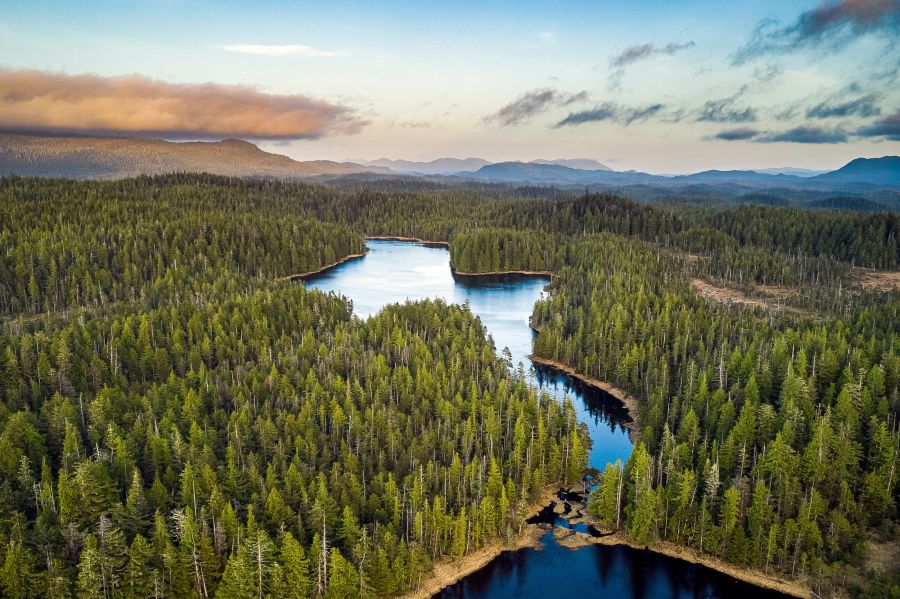
Anchorage puts the Chugach Mountains right at your doorstep. Downtown one minute, hiking a rugged trail the next. I’ve driven out to Hatcher Pass near Palmer, and the alpine meadows and old mining ruins just make you feel like you’re in another era.
The road system in Anchorage makes longer adventures a breeze. Head north to Talkeetna for Denali views or cruise south along the Cook Inlet for coastal scenery and maybe a beluga sighting. That freedom to just pick a direction and go? Juneau can’t match it.
Juneau, though, is wrapped up in the Tongass National Forest. You don’t drive out—you hike or boat deeper into the wild. The mountains shoot up right from the water, and trails climb fast into alpine territory. It’s more remote, more cut off, but honestly, that’s the charm if you want solitude.
Glaciers and Icefields
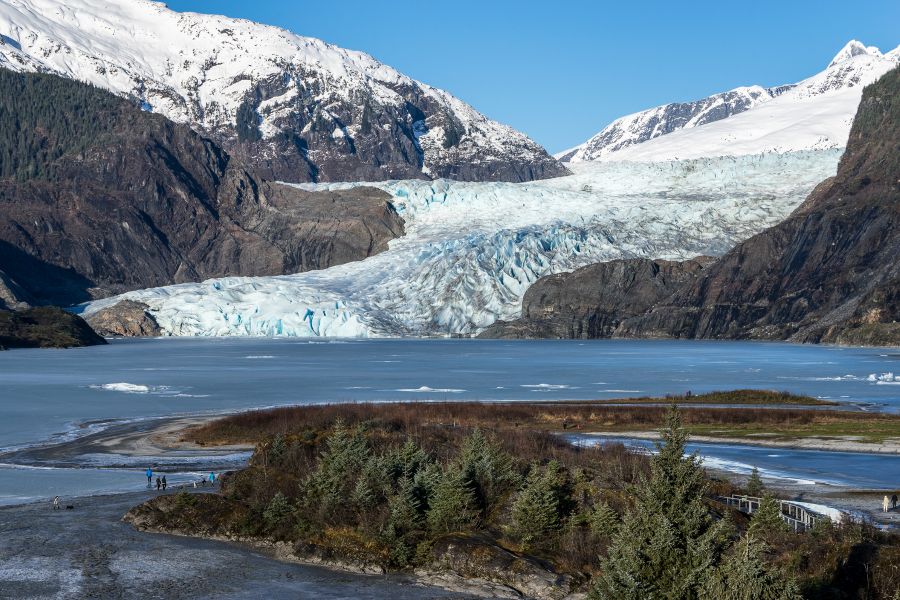
Juneau is glacier central. The Mendenhall Glacier is just 15 minutes from downtown, and you can walk right up to the visitor center or paddle a kayak across the lake for a closer look. Watching ice crack off into the water—seriously, it sticks with you.
The Juneau Icefield stretches out behind town, and you can hop on a helicopter tour to wander blue crevasses up close. It’s like being on another planet, and you don’t have to go far to get there.
Anchorage has its share of glaciers, but they’re more of a drive. Head to Portage or catch a boat out of Whittier to see tidewater glaciers in Prince William Sound. They’re stunning, but you’ll need to plan for a longer trip compared to Juneau’s walk-up access.
If glaciers top your Alaska wishlist, Juneau makes it easy. If you want them as part of a bigger road trip, Anchorage fits better. Both deliver the ice—just in their own style.
Outdoor Activities and Adventure
Both Anchorage and Juneau serve up plenty of adventure, but the vibe is totally different. Anchorage gives you the keys to the road; Juneau surrounds you with glaciers, fjords, and wildlife right outside your door.
Hiking and Trails
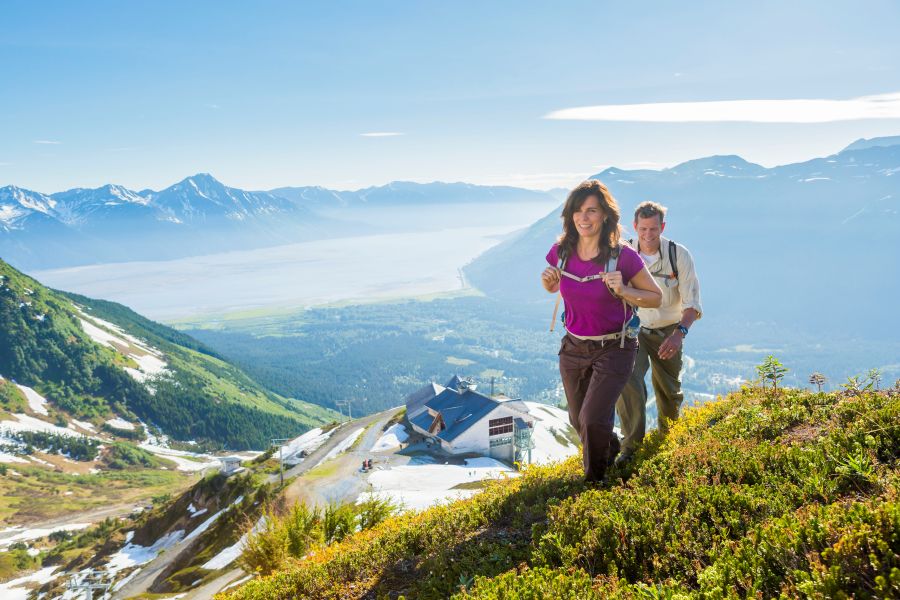
If hiking’s your thing, Anchorage is all about options. Drive to trailheads in the Chugach Mountains, Kenai Peninsula, or even up toward Denali. Flattop Mountain is a classic—a short, steep climb with panoramic city views.
Juneau’s trails feel more immediate and dramatic. Nugget Falls near Mendenhall Glacier is a quick, unforgettable walk, and Mount Roberts gives you a tough climb or a tram ride to the top. You’re never far from waterfalls, icefields, and those big alpine views.
I’ve noticed Juneau’s hikes start right where you arrive—off the plane, onto a trail, glacier views within minutes. Anchorage makes you drive a bit, but you get more variety. If you’re into guided adventures, plenty of day tours combine hiking, glaciers, and wildlife, so you can pack a lot in.
Wildlife Encounters
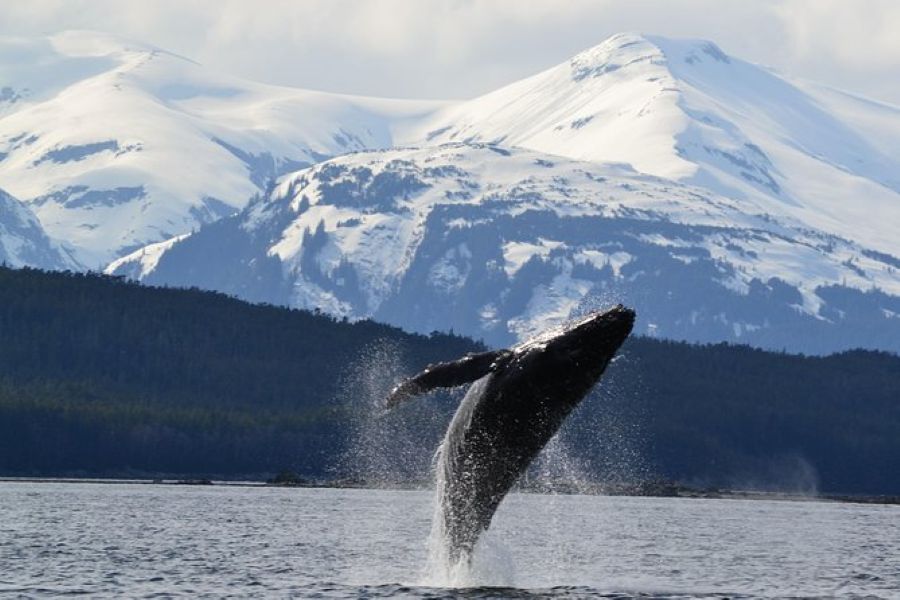
Anchorage puts the Alaska Wildlife Conservation Center right at your fingertips—you just drive down the road and suddenly you’re face to face with bears, moose, and bison. If you keep going, Dall sheep cling to the Turnagain Arm cliffs, and sometimes beluga whales pop up in the inlet.
I’ve honestly pulled over more than a few times just to watch moose munching away near the highway. It never gets old.
Down in Juneau, the wildlife vibe shifts—everything feels a bit more ocean-focused. Whale watching is the main event, especially in summer when humpbacks and orcas show up to feast.
You can hop on a floatplane to Admiralty Island for a shot at seeing brown bears in the wild. I’ll never forget standing on that quiet beach, watching bears yank salmon straight from the stream. For a second, I felt like I’d wandered onto a film set.
Birders get their fix in both cities, but Juneau’s home in the Tongass National Forest makes it a real hotspot. Eagles? Everywhere. If you’re up for a guided adventure, wildlife tours focus on bears, whales, or whatever you’re hoping to see.
Fishing and Hunting

In Anchorage, you can cast a line for salmon right in the middle of downtown at Ship Creek. It’s wild—one minute you’re surrounded by city, the next you’re knee-deep in a river with a fishing rod.
Drive a bit and you hit the Kenai River, world-famous for those monster salmon. Most hunting trips launch from Anchorage too, since outfitters can fly you deep into Alaska’s interior wilderness.
Juneau flips the script with saltwater fishing. Charter boats whisk you out into the Inside Passage for halibut, salmon, and rockfish. I tried a half-day trip once and came back with so much halibut I had to share it with friends for weeks.
Hunting’s trickier around Juneau because of its island setup, but a boat or plane can still get you to the action. If fishing is your main thing, Juneau’s charters are top-notch. But if you want the flexibility of both fishing and hunting, Anchorage is just easier.
Water-Based Experiences
Alaska’s coastlines couldn’t be more different. In Juneau, you’re basically wrapped in water and mountains, so getting on a boat just seems like the thing to do.
Anchorage opens up the Kenai Peninsula and Seward—think glaciers, marine life, and wide-open adventure.
Boat Tours and Cruises
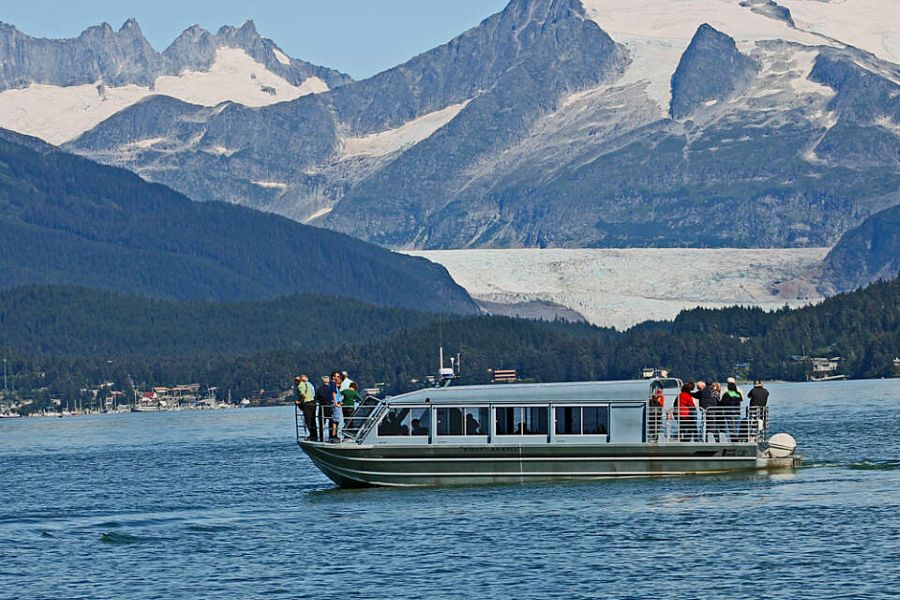
When you’re in Juneau, jumping on a boat tour is a no-brainer. You’ll glide past massive glaciers like Mendenhall, or maybe catch humpback whales bubble-net feeding. Ferries link you to nearby towns, so Juneau feels a little less remote than it looks on the map.
Anchorage doesn’t offer that “step out and you’re at the dock” setup, but it’s your launchpad for Seward. Day cruises from there take you into Kenai Fjords National Park, right up to tidewater glaciers. Puffins, otters, maybe even orcas—they’re all on the menu.
I’ve done both, and honestly, they’re totally different experiences. Juneau’s tours feel up-close and personal with the landscape, while Seward’s bring that big, wild ocean energy. If you’re game, cheap flights make it surprisingly doable to hit both cities in one trip.
Kayaking and Water Sports
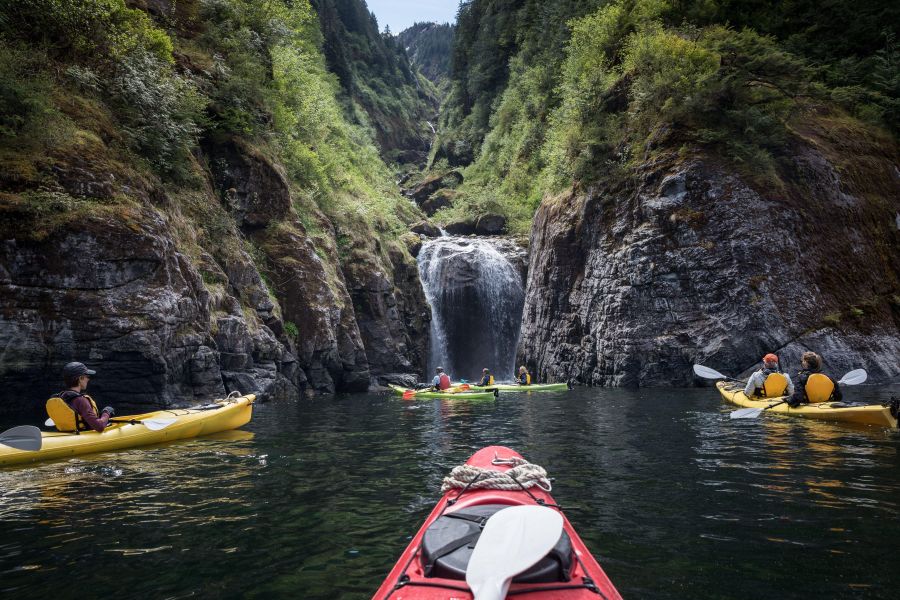
If you want to paddle in peace, Juneau’s a dream. Calm channels around Auke Bay or Mendenhall Glacier Lake let you get right up to floating ice. It’s like sneaking into nature’s secret hideout.
Anchorage doesn’t really have those sheltered waters, but if you don’t mind a drive, Resurrection Bay near Seward is worth it. Kayaking there is more rugged—sea caves, rocky shores, and seals that seem just as curious about you as you are about them.
Not into kayaking? No worries—both places offer fishing charters. Juneau’s all about those salmon runs, while the Kenai Peninsula is halibut heaven. Either way, being out on the water is less about the catch and more about soaking up views you just can’t get from land.
Culture, History, and Local Attractions
Both Anchorage and Juneau let you dive deep into Alaska’s past and present. You’ll bump into museums, Native traditions, and a constant churn of festivals, galleries, and performances that keep things lively.
Museums and Heritage Centers
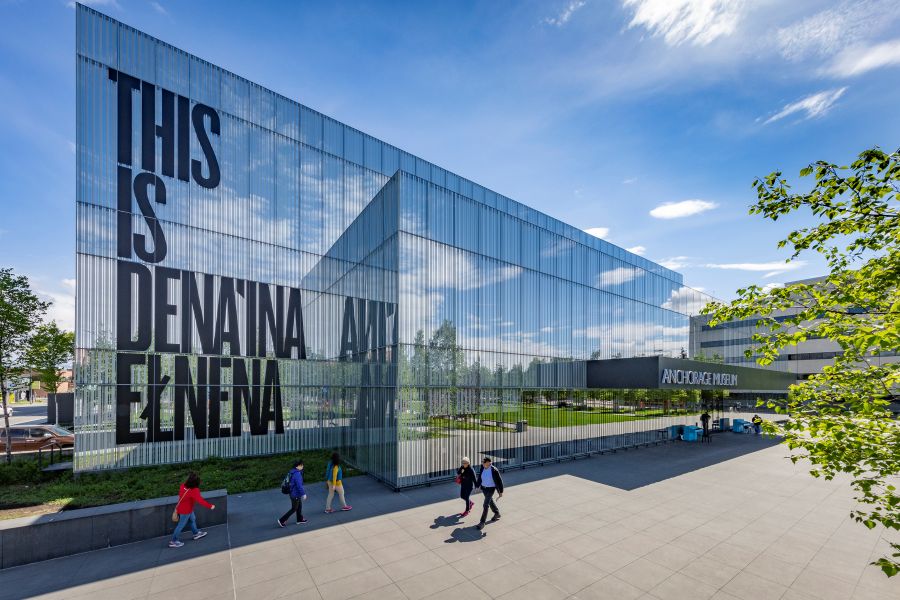
If you’re a museum buff, Anchorage’s Anchorage Museum is a must. Art, history, science, and Native culture all under one roof—it’s easy to spend half a day there and still feel like you missed something.
Juneau’s Alaska State Museum is smaller but laser-focused. You’ll find Gold Rush stories, Russian history, and political tales. I liked how approachable it felt—no museum fatigue, just a solid sense of Alaska’s story.
For a deeper dive, Anchorage also has the Alaska Native Heritage Center. It’s not just exhibits; you can wander between traditional dwellings, watch live storytelling, or catch a dance. It’s interactive and feels alive, not just a bunch of artifacts under glass.
Alaska Native Culture
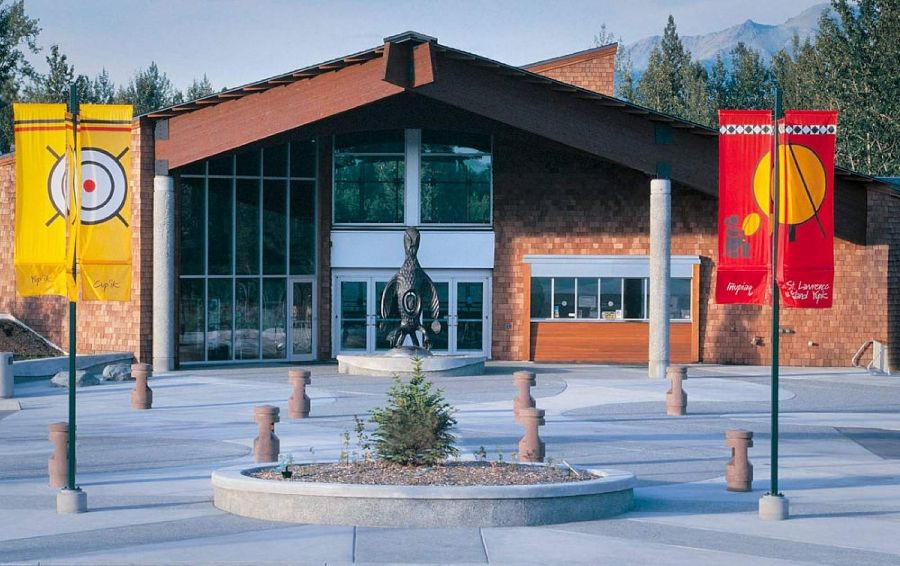
Both cities offer ways to connect with Alaska Native traditions, but the vibe is different. Anchorage’s Alaska Native Heritage Center stands out—you’ll see carving, hear Native languages, maybe even join a drumming circle. It’s personal and real, not just a show for tourists.
Juneau weaves Native culture into everyday life. Totem poles stand tall in public spaces, and galleries are packed with Alaska Native art. The Sealaska Heritage Institute runs events and exhibitions that shine a spotlight on Tlingit, Haida, and Tsimshian cultures.
Honestly, Juneau’s Native culture feels woven into the city’s fabric, while Anchorage’s is more curated. I’m not saying one’s better—it just depends on how you want to experience it.
Arts and Events
Anchorage is bigger, so the arts scene is, too. Theaters, live music, and all kinds of festivals fill the calendar, especially when those endless summer days roll around. Locals really make the most of every minute of daylight.
Juneau might be smaller, but the arts are strong here. The Juneau Arts & Humanities Council keeps the performances coming, and cultural festivals have a real community feel. I once wandered into a local music night and it seemed like the whole town was there.
If galleries are your thing, both cities deliver. Juneau leans local—Native art, homegrown talent—while Anchorage mixes in more contemporary and experimental stuff. Trust me, you won’t run out of inspiration in either place.
Food Scene and Local Flavors
Anchorage and Juneau both take food seriously, but the approach couldn’t be more different. Anchorage goes for variety and convenience, while Juneau celebrates whatever’s fresh from land and sea.
Fresh Seafood Specialties

If you’re chasing seafood, the contrast jumps out. In Juneau, the ocean connection is right in your face. Locals buy halibut or salmon straight from the boat, and foraged treats like spruce tips or wild berries sneak into sauces and cocktails. It’s not just about eating—it’s about eating what’s right here, right now.
Anchorage, being bigger and better connected, offers more imported options but still shines with Alaskan staples. Fresh Pacific salmon, king crab, and halibut show up everywhere, sometimes with an international twist. I once tried reindeer sausage at a tiny Anchorage diner and, honestly, it felt just as “Alaska” as the seafood.
Juneau’s seafood tastes like it came from the backyard, while Anchorage balances local flavor with global variety. If you want to taste the region in the purest way possible, Juneau probably wins.
Dining Options and Local Favorites
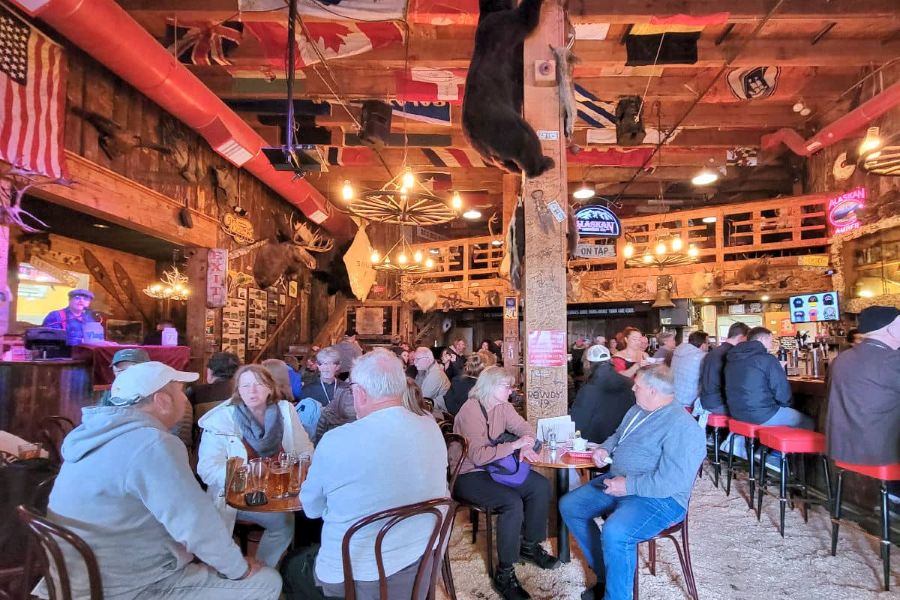
Anchorage’s size means more choices, simple as that. Food trucks, cozy diners, international eats—they’re all here, right alongside classic comfort food with an Alaskan twist. The market scene is lively, too, with stalls full of smoked fish, fresh bread, and crafts. You could eat tacos one night and Thai curry the next without batting an eye.
Juneau feels cozier and more personal. Chefs love to show off local ingredients—maybe handmade pasta with wild mushrooms, or fish tacos from a food truck that everyone in town seems to know. Breweries and distilleries add their own spin, with drinks that taste like the forest and coast.
If you want endless options, Anchorage has you covered. But if you’re after a meal that really reflects the land and sea, Juneau’s restaurants and food culture are tough to beat. And if you’re planning to hit both cities, some handy travel gear makes those food adventures way easier.
Frequently Asked Questions
Anchorage and Juneau really do give you two different slices of Alaska. One’s plugged into the rest of the state by road, while the other sits tucked away in the Inside Passage, living at a slower, more ocean-driven pace.
What are the key differences in living experiences between Anchorage and Juneau?
Living in Anchorage feels like small-city USA. You get chain stores, a ton of restaurants, and roads that let you drive pretty much anywhere.
Juneau’s a different story—you can only get there by plane or ferry. That isolation shapes life: you rely on the community, ferries, and small businesses a lot more.
How does the cost of living in Juneau compare to that of Anchorage?
Groceries and goods run more expensive in Juneau because everything comes in by boat or plane. Anchorage usually wins on price thanks to easier supply lines.
Housing? It’s all over the map in both cities, depending on the neighborhood. If you’re serious about moving, check cost of living stats side by side first.
What are the climate variations between Anchorage and Juneau throughout the year?
Anchorage gets colder winters and more snow, but also more sunshine. Summers can be surprisingly warm if you catch a clear day.
Juneau’s weather is wetter and milder—rain is kind of a constant companion. Winters aren’t as harsh, but the gray can drag if you’re not used to it.
Which city, Anchorage or Juneau, offers more employment opportunities?
Anchorage usually has more jobs, since it’s the biggest city. You’ll see openings in healthcare, government, oil, and transport.
Juneau’s economy runs on state government and tourism. A lot of jobs are seasonal, especially when the cruise ships roll in.
Can you highlight the cultural and recreational differences between Juneau and Anchorage?
Anchorage gives you theaters, concerts, and bigger festivals, plus quick access to hiking, fishing, and skiing.
Juneau feels tighter-knit. Strong Native culture, local art, and glaciers or whale watching just minutes away. If you’re lugging bags while exploring, luggage storage near the transport hubs is a lifesaver.
What are the transportation options available for traveling between Juneau and Anchorage?
Honestly, if you’re trying to get from Anchorage to Juneau, you’ve really got two choices: plane or ferry. Flights happen all the time, though I’ll admit, the ticket prices aren’t always friendly—watch out for that.
The Alaska Marine Highway is another option, but wow, it’s a trek. If you’re not in a rush and maybe want to soak up those wild coastal views, it’s kind of an adventure in itself. Oh, and before you book anything, a lot of folks check out travel insurance. Never hurts to have a little backup, right?
